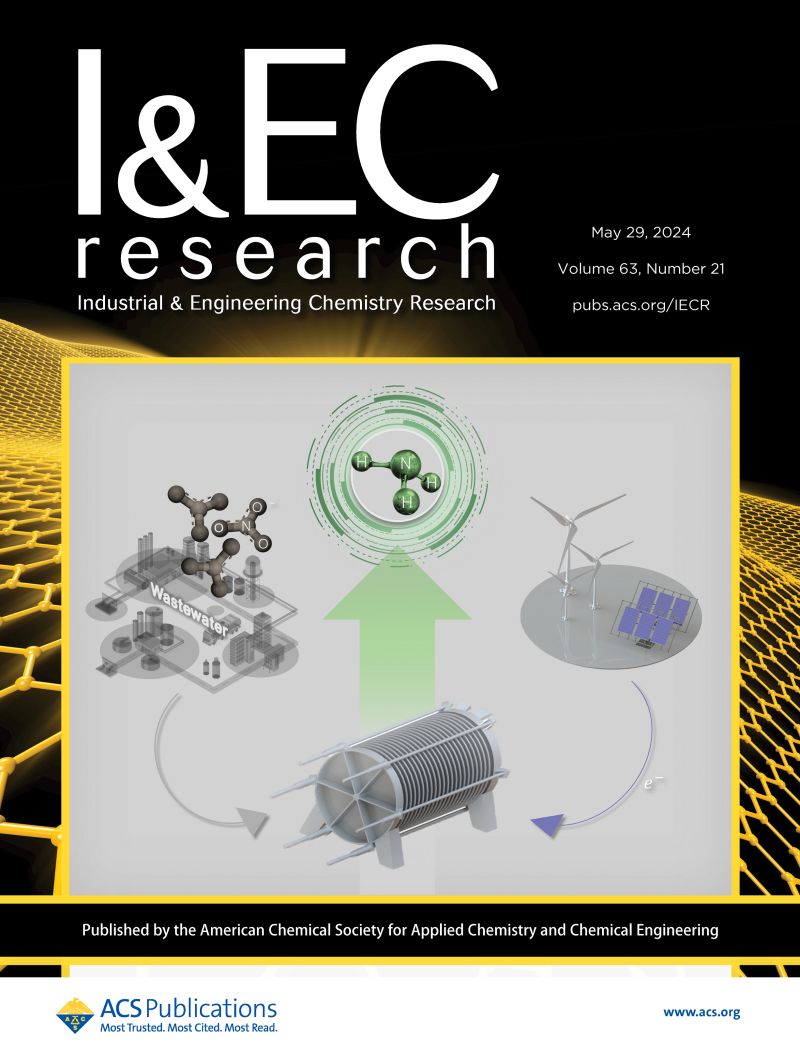Preparation of Z-Scheme BiVO4/g-C3N4/PANI Heterojunction and Its Photocatalytic Degradation of Enrofloxacin
IF 3.8
3区 工程技术
Q2 ENGINEERING, CHEMICAL
引用次数: 0
Abstract
This study presents the synthesis and evaluation of a BiVO4/g-C3N4/PANI ternary heterojunction photocatalyst for the degradation of enrofloxacin (ENR) under visible light irradiation. The results demonstrate that the BiVO4/g-C3N4/PANI (10%) composite achieved a 91% removal efficiency of ENR within 120 min, following first-order kinetic behavior. Moreover, the photocatalyst exhibited stable degradation performance and maintained structural integrity after five consecutive cycles. The photocatalyst was characterized by XRD, SEM, TEM, FT-IR, XPS, and UV–vis DRS. The enhanced photocatalytic performance is attributed to the Z-scheme charge transfer mechanism facilitated by PANI, which enhances the separation of photogenerated carriers and reduces their recombination rate. Radical scavenging experiments and ESR spectroscopy confirmed that superoxide radicals (•O2–) and hydroxyl radicals (•OH) play dominant roles in the degradation process. Additionally, 15 degradation products of ENR were identified, and four major degradation pathways were proposed. The findings provide a theoretical basis for the application of this ternary heterojunction in environmental remediation and highlight its potential for efficient degradation of antibiotics.

Z-Scheme BiVO4/g-C3N4/PANI异质结的制备及其光催化降解恩诺沙星
研究了BiVO4/g-C3N4/PANI三元异质结光催化剂在可见光下降解恩诺沙星(ENR)的合成和评价。结果表明,BiVO4/g-C3N4/PANI(10%)复合材料在120 min内达到91%的ENR去除效率,符合一级动力学行为。此外,光催化剂在连续5次循环后表现出稳定的降解性能和结构完整性。采用XRD、SEM、TEM、FT-IR、XPS和UV-vis DRS对催化剂进行了表征。聚苯胺促进了Z-scheme电荷转移机制,增强了光生载流子的分离,降低了它们的重组速率。自由基清除实验和ESR光谱证实了超氧自由基(•O2 -)和羟基自由基(•OH)在降解过程中起主导作用。此外,还鉴定了15种ENR降解产物,并提出了4种主要降解途径。研究结果为该三元异质结在环境修复中的应用提供了理论基础,并突出了其高效降解抗生素的潜力。
本文章由计算机程序翻译,如有差异,请以英文原文为准。
求助全文
约1分钟内获得全文
求助全文
来源期刊

Industrial & Engineering Chemistry Research
工程技术-工程:化工
CiteScore
7.40
自引率
7.10%
发文量
1467
审稿时长
2.8 months
期刊介绍:
ndustrial & Engineering Chemistry, with variations in title and format, has been published since 1909 by the American Chemical Society. Industrial & Engineering Chemistry Research is a weekly publication that reports industrial and academic research in the broad fields of applied chemistry and chemical engineering with special focus on fundamentals, processes, and products.
 求助内容:
求助内容: 应助结果提醒方式:
应助结果提醒方式:


